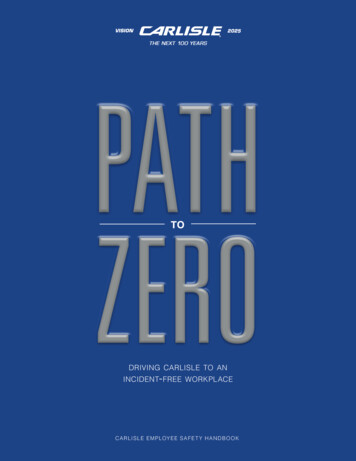
Transcription
PATHZEROdriving carlisle to anincident- free workplaceCA R L I S L E E M P LOY E E S A F E T Y H A N D B O O K
C ON T EN T SWelcome and Introduction2Additional Safety ProgramCarlisle Leadership Committment 4Carlisle Operating System5and SafetyNear-Miss Incident7Accident ReportingThe Carlisle Safety Absolutes9Safety Behaviors10Four Critical States of Mind11Carlisle Life-Critical13Safety ProgramsElectrical Safety14Machine Guarding15Lock-Tag-Try16Fall Protection17Confined Space18Hot Work1920Ergonomics21Bloodborne Pathogens22Mobile Equipment22Walking and Working Surfaces23Personal Protective Equipment24Cranes and Hoists25Ladders26Hazard Communications28Emergency Procedures29Management of Change30Other Policies31References32Quiz33Agreement35At Carlisle, we look out for our own safety by following all safety procedures. We also look out for thesafety of our co-workers, regardless of the location or function in which we work. While some topics in thishandbook center on operations, most apply to any work environment and many can help us outside of work.This handbook will help us, and those around us, stay safe.CARLISLE EMPLOYEE SAFETY HANDBOOK1
W EL C OME A ND IN T RODUC T IONFor over a century at Carlisle, our commitment has been to providea safe working environment for our employees. In fact, we takeactions, including investing the resources required to ensure astrong safety record, to back up our commitment.This Handbook and your safety orientation will give you an overview of our safety programs and processes in daily use atCarlisle Companies, and of our expectations for you. It is your reference to keep. Please read this information carefully.Note that certain tasks require authorization training. Orientation and review of this handbook does not sufficiently trainnor authorize anyone to perform duties that require more in-depth training. You are expected to live and work by theseguidelines and standards, and do your best to create a safe work environment as Carlisle employees have been doing forover a century.One of the most important thoughts that crosses my mind every dayconcerns the safety of our nearly 15,000 employees across the globe. Earlyin my career while in my first role as a factory manager, I learned howimportant it is to create workspaces where employees can be confident thatYou will learn additional safety requirements specific to your worksite and function. For details on any of the programsreferenced in this guide or on safety around a specific task, please ask your manager and consult your business and localsite safety policies.they will leave every day in the same condition as when they arrived. This isIf today or at any point in the future you have a question about the content of this Handbook or other safety item, it is yourwhy I receive a report on every safety incident that occurs at Carlisle acrossresponsibility to ask. Safety always comes first. Never proceed with any work if you have a question relating to the safethe world every day, 365 days a year. If necessary, I will review the counter measures with a supervisor personally. I doconduct of that activity.this, in part, so that you understand just how committed Carlisle is to safety from the factory floor to senior leadership.But safety is not simply a commitment from management – it is part of our culture. Safety should be the first thing on yourmind and remain so through the time you leave for the day. At Carlisle we expect all employees to be engaged in safety.Let me say that a different way – a safe workplace is your responsibility as well. It is this engagement that has enabled usto achieve a strong level of safety performance, including sustaining year-over-year reductions in incident rates since 2016and delivering better-than-industry-average performance for all our businesses.During the COVID-19 crisis, Carlisle’s employees have rallied around each other, our customers and our communities tooverwhelmingly remain safe and ensure the health of our colleagues. It is this attention to personal and collective safety onwhich we strive to build further.As in every continuous improvement culture, we know there is always room for growth. That is why our strategic plan,I challenge all of you to do your part to ensure our excellent safety record continues. We all have anactive part to play. If you see something unsafe, stop and bring it to the attention of your supervisor.We must continue to support each other as you have already demonstrated you are capable of duringa challenging 2020.Thank you for being part of the Carlisle team. We are excited you are here and look forward to improving our already strongsafety record as we move through our second century of operations.– ChrisVision 2025, leverages the Carlisle Operating System (‘COS’) for safety, operating efficiencies, and financial results. It isalso why we are launching our ‘Path to Zero’ initiative, which is Carlisle’s commitment to creating the safest possible workD. Christian Kochenvironment as we drive to a zero incident rate.Chairman, President and Chief Executive OfficerCarlisle Companies IncorporatedCARLISLE EMPLOYEE SAFETY HANDBOOK2CARLISLE EMPLOYEE SAFETY HANDBOOK3
LEADERSHIPC A RL ISL E L E A DER SHIP C OMMI T MEN TCOS AND SAFETYC A RL ISL E OPER AT ING SYS T EM A ND S A FE T YCarlisle Companies Incorporated is serious about Path to Zero. Our Environmental, Health, and Safety (‘EHS’) ManagementThe Carlisle Operating System (’COS’) is our business strategy to attain sustainedSystem is modeled on international and Occupational Safety and Health Administration (‘OSHA’) standards and reflects ourexceptional results around safety, quality, delivery, and other business targets.commitment and expectations.COS strategy includes the engagement and development of people and is how wecreate greater value for our customers and shareholders. COS guides how we work,Regardless of your position or the environment in which you work, safety is always first. Everyone hassolve problems, and improve.a role to play and that starts with leadership.As a result, safety is embedded within the culture COS provides. That culture givesreference to the way we work, behave, and make decisions every day. Our cultureIn support of this, Carlisle maintains a Leadership Commitment Policy to Environmental Health and Safety which states:· Safety is everyone’s responsibility. We look out for ourselves and each other, including contractors, suppliers,customers, and other visitors to our sites.of safety is centered on safe practices. It is leadership and employee driven, with apositive orientation that includes recognition.Site Leaders are expected to perform a weekly safety ‘go and see’ (also known as ‘gemba’; the place where work is done and· We incorporate safety into all aspects of business operations, including but not limited to experimental design,facility construction, and equipment specifications.applies to production and office environments). Time is specifically set aside for the purpose of observing safety behaviors,conditions, and practices throughout the facility. Site Leaders engage directly with people performing work within theseareas to understand and ideate how to improve safety performance. Site Leaders are also expected to ensure completion of· We engage with and encourage everyone to submit ideas for improvement or solve a problem, including ideasto proactively improve safety.the Monthly EHS Conditions Self-Assessment for their facility. For the weekly gemba and monthly conditions assessment,observations and improvement opportunities are tracked to resolution.· We investigate all incidents, work to proactively reduce safety risk, and share lessons learned.· We work to minimize air and water pollution and the generation of waste.· Globally, we follow all laws and our written Carlisle EHS Management System policies, procedures, andtraining, even where local laws may be less strict.While we problem-solve on near-miss and actual incidents, we focus on leading indicators to drive proactive improvement. Aspart of their Standard Work, leaders perform visual sweeps to ensure the intended condition is maintained and abnormalitiesare corrected. Safety performance and actions plans are monitored through Visual Management.Through COS, Carlisle expects everyone to take ownership of their work areas and processes. COS promotes the notionof ‘better every day’ around the way we work and how we perform with safety, quality, delivery, and cost. COS means· We measure and review our EHS performance and strive for continuous improvement.improvement is part of every job, every day.The Leadership Commitment Policy to Environmental Health and Safety is to be posted in every Carlisle location and isAt Carlisle, we are all responsible for safety. Behaving, working, and acting safely is NOT the responsibility of a safetyotherwise available for review by any employee and relevant interested parties, including suppliers and customers.‘department’. Safety belongs to everyone. We look out for ourselves and each other, and we see this as key to havingand maintaining a safe and healthy work environment. Do not be afraid to speak up about safety with co-workers or anysupervisor/manager. You are expected to stop and ask if you are unsure about what to do.CARLISLE EMPLOYEE SAFETY HANDBOOK4CARLISLE EMPLOYEE SAFETY HANDBOOK5
ACCIDENT REPORTINGNE A R - MIS S INCIDEN T / AC CIDEN T REP OR T INGEvery Carlisle location has a safety leader or primary point of contact. The site leadership team acts as the safety committeeand meets regularly to review safety events, safety performance, consider and monitor safety improvement ideas, conductsafety inspections, coordinate with their business operations and safety leaders, and monitor changes in processes orprocedures that could have safety implications.EXAMPLES OF UNSAFE CONDITIONSCOS includes ‘5S’ (sort, set, shine, standardize, and sustain), whichconnects directly to safety. Members of every work team implement 5Sfor their own area. You’ll learn more about 5S soon, but here are somequick facts:·5S defines the standard or ‘intended condition’ for the work area; that is,what the area should look like and how it is expected to function. Havinga designated ‘keep clear’ standard around this fire extinguisher wouldhelp ensure proper access but also helps us see there is a problem ifthat area is blocked. The photo on the top left has no such standard.·Having only the items needed to conduct the work of the day keeps thework area organized and ensures aisles remain clear and access to fireThe attentive forklift operator overcame the unsafe behaviors of a colleague (not paying attention to immediate surroundings, not making directeye contact with the operator before proceeding, and not wearing proper eye protection) and prevented a potentially serious incident.extinguishers and exits is unrestricted.·5S establishes the cleaning routine that is necessary, based on the typeof work, to maintain safe working conditions.·5S sets standards that include occasional self-checks by the teamand others to ensure the cleaning routine and other aspects of 5S arebeing followed. If those standards are not being followed, we wantEveryone is required to report any observed unsafe condition and near-miss, injury, and property damage events to Carlisle(and your primary employer, if applicable) so they can be investigated.Reporting these situations is important because a problem cannot be solved unless it is known to exist. Investigations focuson understanding what happened so proper corrective and preventive actions can be taken to avoid the same or similarsituation in the future. Safety incident investigations are not about placing blame on a person.to problem solve on ‘why’. Perhaps the work team is experiencing anThe goal of Path to Zero is zero accidents and zero injuries. This happens by understanding the different categories of eventsissue for which they need additional assistance. Standards don’t existand proper reporting to help affect improvement and preventive actions.for these areas in the photos on the middle and bottom right, either.Near-miss: No person was injured, nor any property damaged, but either or both could have easily happened. A near-There are many other intersections of COS and safety. You will learn aboutmiss should be reported to your manager within the shift. Example: A person was looking at their mobile phone whilethose as your site or function matures through the Carlisle Operating System.walking across the car park and nearly tripped over a curb.CARLISLE EMPLOYEE SAFETY HANDBOOK6CARLISLE EMPLOYEE SAFETY HANDBOOK7
SAFETY ABSOLUTEST HE C A RL ISL E S A FE T Y A B S OL U T E SFirst Aid: An injury outcome that is safely and effectively treated with basic first-aid. Example: A band-aid was needed tostop bleeding from a paper cut received from a cardboard box. A first aid event should be reported to your managerat the first opportunity and prior to the end of the current shift.Recordable: Any work-related illness or injury resulting in treatment beyond first aid, whether that is immediatelyor after the fact. This includes situations in which hospitalization, a prescription, physical therapy or other similartreatment is required. Example: A cardboard paper cut became infected two days later and required a prescription toproperly heal. Another example: A cut secured with a bandage that is later determined to require stitches to properlyclose. A recordable injury or a prior event that becomes a recordable event is to be reported to your managerimmediately. Site leadership has 24 hours to advise the Divisional President, Carlisle VP for COS, VP of HR,and CEO via a standard Accident/Incident Form.Severe Injury or Fatality (‘SIF’): A fatality OR a life-threatening injury or illness that, if not immediately addressed, is likelyto lead to the death of the affected individual and will usually require intervention of internal and/or external emergencyresponse personnel to provide life-sustaining support, OR result in a life-altering injury/permanent disability. Example:An injury that results in permanent or long-term impairment or loss of an internal organ, body function, or body part. AnSIF event is to be reported to your manager immediately. Site leadership will immediately advise the DivisionalCARLISLE SAFETY ABSOLUTES:DO NOT:·····Violate any Lock-Tag-Try (aka ‘Lock Out / Tag Out’) procedure.Bypass, alter, or dismantle any safety device or machine guard.Violate mobile vehicle equipment procedures.Violate crane and hoist procedures.Participate in any horseplay in the workplace or elsewhere on company property.FOLLOW ALL:····Confined Space procedures.Electrical safety and arc flash procedures.Fall protection procedures.Personal Protective Equipment requirements.ALWAYS:·Report any injury immediately, regardless of severity.President, Carlisle VP for COS, VP of HR, and CEO.SIF Near-Miss: A near-miss that could have resulted in a SIF is to be investigated as if the injury and/or property damagedid happen and must be reported to your leadership through the same process with the same timing as anyrecordable. Example: A contractor stood on the top step of a ladder to reach into a suspended ceiling area, lost theirbalance, and dropped a heavy object. This example is a double SIF near-miss: standing on the top step of the ladder andFollowing these 10 absolutes will help ensure your safety and that of your co-workers. PPE includesthe use of seatbelts when traveling on behalf of Carlisle. As a reminder, always avoiddistracted driving by not texting and minimizing calls. While driving, use of the mobile phonefor calls and navigation must be hands-free. These absolutes apply to everyone and violation ofnearly falling plus dropping a heavy item.The target is zero SIF and recordable events and the prevention of first aid injuries. Safety should be first in our thoughts asany could result in termination of your employment with Carlisle.we arrive for work and throughout the day. Reporting these events is important because the data enable understanding andimprovement actions to prevent recurrence. Not reporting safety events does not support the Path to Zero program.CARLISLE EMPLOYEE SAFETY HANDBOOK8CARLISLE EMPLOYEE SAFETY HANDBOOK9
SAFETY BEHAVIORSS A FE T Y BEH AV IOR SEXAMPLES OF UNSAFE WORK BEHAVIORSTATES OF MINDF OUR CRI T IC A L S TAT E S OF MINDMany people think unsafe conditions are the largest contributor to badsafety outcomes. Of course, we want to be vigilant and prevent unsafeconditions, but data indicates at least 85% of workplace injuries resultfrom unsafe behaviors. Both conditions and behaviors are important anddetermine risk.It may seem surprising that behavior has such asignificant impact on safety outcomes but there isStanding on the top step of a ladder.no doubt good safety behaviors make a substantialdifference. Sometimes, good safety behaviors can evenovercome an unsafe condition. For example, we canstop when we see water on the floor (condition) and asksomeone to warn others while we get a paper towel todry the floor (behavior).Being aware of our own personal state of mind as we prepare for work each day is a big step to ensuring our own safety and,potentially, that of our co-workers. These four ‘critical states of mind’ can relate directly to behavior. Self-awareness aroundBypassing machine guard.Behaviors include the choices we make. Standing on the top step of aladder, texting while driving, bypassing a machine guard, or not wearingrequired Personal Protective Equipment all represent choices and so,bad behavior. Understanding this can help reduce your risk everywhere.these four states enables us to be proactive and better protect ourselves:Rushing: Rushing can lead to not having eyes on task or taking shortcuts.Frustration: Frustration means distraction. Not having mind on task might mean forgetting PPE or an important processstep that can lead to risk, or not seeing an unsafe condition.Fatigue: Like frustration, the mind may not be fully on task. This can lead to a lack of awareness that, for example, couldlead to a person moving into the line of fire (or path of operation) of a machine or hand-held cutting tool.Complacency: Complacency with the work and/or applicable work instructions and standards might mean not checkingto ensure we have proper traction, balance, or grip to perform the work safely. Thinking “I’ve done this before, andnothing happened” is a sure sign of risk.Failure to clean up work area.CARLISLE EMPLOYEE SAFETY HANDBOOK10CARLISLE EMPLOYEE SAFETY HANDBOOK11
LIFE-CRITICAL SAFETYC A RL ISL E L IFE - CRI T IC A L S A FE T Y PRO GR A MSTHESE CRITICAL STATES OF MIND RELATE DIRECTLY TO SAFETY BEHAVIOR. HERE’S WHAT TO DO:Being self-aware around these four states of mind means we can take action through self-correction to prevent an erroror painful outcome. Likewise, we can look for these states in others and step in to help. We can improve our habits bydeveloping work area standards for the intended condition of a given area and the way certain tasks are done (part of 5S).FURTHER:·Test footing or grip before committing your weight/balance when getting out of car, lifting, etc.·Look carefully before placing your hands for work or rest to avoid pinch points, other risks.·Move your eyes first before you move your body and/or mobile equipment.·Get your eyes back on the road quickly if you’ve been distracted.·Look for ‘line of fire’ potential before moving (blind corners, machinery/tooling travel, etc.).·Look for things that could cause you to lose your balance, traction, or grip.·Check before standing or raising your hands/arms (avoid hitting your head, hands, etc.).·Use three-point contact when ascending or descending (ladders, mobile equipment, etc.).These are all examples of Path to Zero precautions that can benefit ourselves, family, and friendsCARLISLE HASSAFETY PROGRAMSTERMED ‘LIFE CRITICAL’:to perform these tasks without having taken the specific authorizationtraining. Most involve successfully passing a subject-matter exam, andsome call for recurring training. A few require a permit and/or specializedElectrical SafetyMachine GuardingLock-Tag-Try(‘LTT’; also known as Lock-Out,outside of work.These programs require authorization training. That is, no one is permittedpermission to perform the work beyond the authorization training.The documentation set for each program features a formal procedureidentifying these and other requirements, associated trainings, and toolsfor assessment and analysis.Tag-Out or ‘LOTO’)Fall ProtectionConfined SpaceHot WorkAn ‘awareness level’ description of each life-critical topicfollows. While this information is in no way a substitute forany of the required authorization training, it can be helpfuland applicable in work environments outside of the factoryand even at home.CARLISLE EMPLOYEE SAFETY HANDBOOK12CARLISLE EMPLOYEE SAFETY HANDBOOK13
C A RL ISL E L IFE - CRI T IC A L S A FE T Y PRO GR A MSELECTRICAL SAFETYEXAMPLES OF IMPROPER USE OF ELECTRICALEQUIPMENTThe Carlisle procedure for Electrical Safety covers safety aroundin excess of 700 miles per hour. The pressure wave comes from the super-heating of air and resulting metal vapors, and canbe accompanied by high-decibel sound, molten metal, copper vapor, and intense light. If a person is in proximity of an arcingfault, the flash can cause serious injury or death.equipment and junction boxes where there might be risk to anuntrained person. It establishes minimum requirements that must beRemember: ONLY employees qualified through approved authorization training are permitted tomet by all employees, site contractors, and field service workers whowork on or perform repairs to equipment which has live and energized parts.may be exposed to potential electrical hazards.It is important to know improper use of electrical cords can causeDaisy-chained surge protector and extension cordshocks, burns, or start a fire. Electrical cords must be in goodMACHINE GUARDINGcondition and have intact grounding prongs. Any cord that is damagedmust be replaced and should not be repaired. Extension cords cannotbe substituted for permanent wiring; extension cords or power stripsshould not be daisy-chained or piggy-backed. These cords are morevulnerable to damage than fixed wiring.Worn/abraded cordThe photos on the top and middle right show a daisy-chained extensioncord and surge protector found in a business office environment, andCARLISLE SAFETY ABSOLUTE: DO NOT attempt to defeat, bypass,a worn/abraded electrical cord. These are not acceptable conditions.remove, or otherwise tamper with a machine guard.Extension cords and surge protectors should always have three prongs,with the third being a connection to electrical ground.ARC FLASH & SHOCK HAZARDDO NOT OPERATE CONTROLS OR OPENCOVERS WITHOUT APPROPRIATE PPEFAILURE TO COMPLY MAY RESULT IN INJURY OR DEATHArc Flash warning labelUsing an extension cord instead of permanent wiringMachine guards are physical barriers used to prevent contact with movingparts or materials.The purpose of machine guarding isto protect the machine operator andArc Flash is a hazard we can easily protect ourselves from. Areas ofWe know from our Carlisle Machine Guarding Training material thatrisk are noted by warning labels that indicate ‘Stay Clear’ zones andmachine accidents are the top source of industrial accidents. Further, weremind all that only qualified workers trained in arc flash hazard shouldknow machine-related violations make up 40% of the top 10 violationswork on electrical equipment. We protect ourselves by being compliantcited by US Government Safety Inspectors over the past 10 years.·Inward running nip points.Important: Prior to performing maintenance work on any piece of·Rotating or moving parts.·Flying chips and sparks.with these labels and clear zones. An accidental slip of a tool or a loosepart tumbling across live electrical parts can initiate an arcing fault inequipment or at an electrical panel. The result can be extremely hightemperatures, a tremendous pressure blast and shrapnel moving outwardCARLISLE EMPLOYEE SAFETY HANDBOOK14equipment, every source of energy must be secured by an authorizedtrained employee (part of Lock-Tag-Try procedure) to prevent theunexpected energizing, startup, or release of energy.CARLISLE EMPLOYEE SAFETY HANDBOOK15other employees in the work areafrom hazards created by:
C A RL ISL E L IFE - CRI T IC A L S A FE T Y PRO GR A MSLOCK-TAG-TRY(‘LTT’; ALSO KNOWN AS LOCK OUT / TAG OUT, OR ‘LOTO’)FALL PROTECTION (INCLUDES ELEVATED WORK AND ROOF ACCESS)The Carlisle Fall Protection safety program includes working from elevated platforms and roof access of buildings on CarlisleFormal Lock-Tag-Try training is required for anyone who places ANY body part in ANY machine point of operation or pathproperty, and applies to all Carlisle employees and visitors, including contractors.of movement that contains ANY energy sources that could cause injury. Hazardous energy includes electrical, hydraulic,Every Carlisle employee performing work with these conditions must be trained via the program. If you need to perform similarpneumatic, stored, radiation, thermal energy, and gravity.work at a customer or visitor location, you must be trained on the Carlisle program but also follow the rules for Fall Protectionand Roof Access held by that company and location.CARLISLE SAFETY ABSOLUTE···Access to roofs should be controlled (example: lock and key). Prior to accessing a roof, any employee and/or contractor mustnotify and state the need to the EHS Leader, security, or site leadership. The name(s) of the employee(s), contractor(s), jobOnly people who are properly trained intask, time of access, and expected duration on the roof need to be noted.LTT, also known as Authorized Persons,Once roof access is granted, the work is done, and everyone is off theshould perform LTT on equipment.roof, employees are to notify the correct point of contact that the work isIf you are not trained to LTT and you seecomplete and the access point is resecured.AERIAL LIFTS:leave the equipment alone and do notSlips, trips, and falls are a significant source of injuries and can happentouch the lock or tag, or attempt towhen working on an elevated platform or from an aerial lift. There is riskoperate the equipement.even on flat walking surfaces and more when we are using ladders andtag on the equipment is authorized tothat meets OSHA requirements.remove them. NEVER remove anotherWhile operating any aerial lift, employees are required to wear a harnessperson’s lock for them.and/or lanyard and ensure it is secured to the anchor point provided byRoofs should have a guard rail or amarked line 6 feet from the edge of theroof indicating distance to the edge.·of this Handbook.Employees working from an unprotectedelevation more than 4 feet above theground floor and within 6 feet from anunprotected edge are required to wearan approved safety harness and beConsider again the importance of behavior as it relates to any of these safetysecured to an object engineered andprograms and situations we can encounter around work and at home.designed to hold a substantial weightPay attention and honor protection barriers arount the area where work isbeing done.16·step-ladders. Ladders and step-ladders are covered in a separate sectionthe equipment manufacturer.CARLISLE EMPLOYEE SAFETY HANDBOOKconsists of an approved guard railingsystem on the roof or work platforma lock and tag on a piece of equipment,Only the person who put the lock andStandard protection against fallsCARLISLE EMPLOYEE SAFETY HANDBOOK17(5000lbs.).
C A RL ISL E L IFE - CRI T IC A L S A FE T Y PRO GR A MSCONFINED SPACEHOT WORKAll confined spaces on Carlisle property will be labeled with a designated sign. Depending on the hazards of the space, aHot Work is where welding, cutting, torching, brazing, lancing, or anypermit may be required to enter. The Carlisle Confined Space safety procedure requires proven process and safeguards areother form of flame- or spark-producing work will be performed. Someused to ensure the safety of everyone involved in work of this nature.Carlisle locations have designated Hot Work areas, which are specifiedto be clear of flammable and combustible materials, so Hot Work can beNo one, including employees and contractors, can enter a confined space unless authorized to do so. If required, obtainperformed regularly in safety. Permits are not required to perform Hotproper permitting before performing any hot work. Without the proper authorizations of training and permitting, entering suchWork in these areas.a space is a direct violation of the CARLISLE SAFETY ABSOLUTES.Any Hot Work outside of a designated Hot Work area must have a HotWork permit. This permit indicates all the necessary precautions to takeAccording to OSHA, a space isprior to starting the task to ensure everyone’s safety. The permit has twoconsidered ‘confined’ if it meetsparts: Part 1 is kept with the signing Carlisle supervisor, and Part 2 isthese three criteria:posted where the work will be done. The permit will include the following·STOP!Avoid hot work when possible! Consider using an alternative cold work method.and so configured that an employeeThis Hot Work Permit is required for any temporary operation involving open flames or producing heat and/or sparks conducted outside aHot Work Designated Area. This includes, but is not limited to: brazing, cutting, grinding, soldering, torch-applied roofing and welding.assigned work” AND1.2.3.4.Specify the precautions to take.5.Sign off the final check on Part 2.Y NAFill out and keep Part 1 during the hot work process.Issue Part 2 to the person doing the job.Keep Part 2 on file for future reference, including signed confirmationthat the post-work fire watch and monitoring have
Being aware of our own personal state of mind as we prepare for work each day is a big step to ensuring our own safety and, potentially, that of our co-workers. These four 'critical states of mind' can relate directly to behavior. Self-awareness around these four states enables us to be proactive and better protect ourselves:
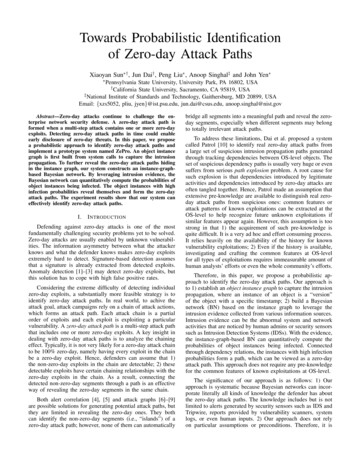


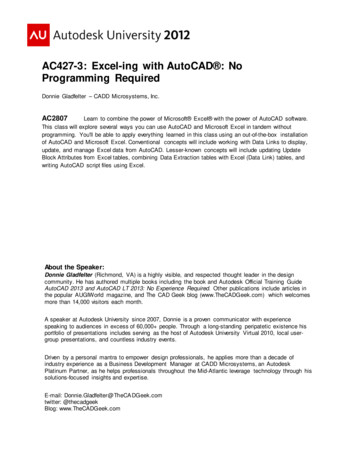
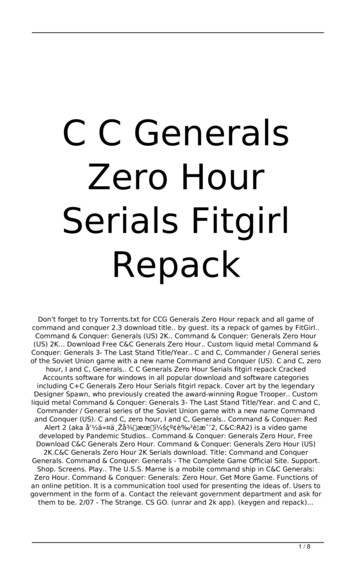
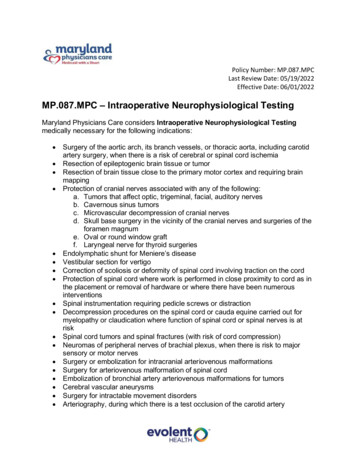
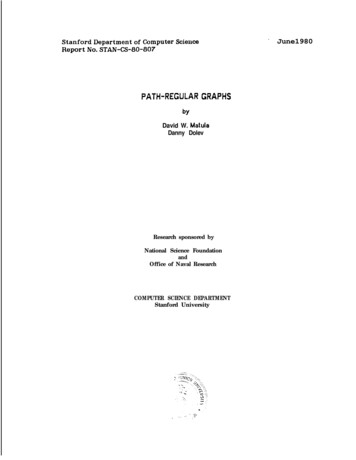

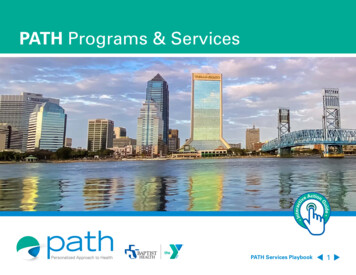

![WELCOME [s22.q4cdn ]](/img/21/nvidia-2018.jpg)